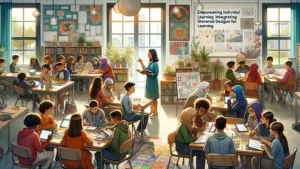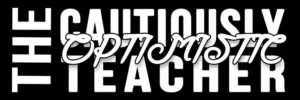Welcome to our comprehensive resource hub dedicated to the dynamic world of differentiated instruction. Here, educators, researchers, and curious minds alike will find a curated selection of articles that delve deep into the principles and practices of differentiated teaching. Whether you’re a seasoned educator seeking to refine your approach or a new teacher exploring ways to address the diverse needs of your students, this collection offers valuable insights, innovative strategies, and real-world examples. Our goal is to empower you with knowledge and tools to create an inclusive, engaging, and effective learning environment for every student. Dive into our articles to unlock the full potential of differentiated instruction in your classroom!

10 Best Math Movies for High School Classes
Teaching math through film can inspire students, bringing real-world applications and compelling stories to your classroom. Math movies not only make abstract concepts more relatable but also highlight the real-world significance of mathematical thinking, problem-solving, and perseverance. Using film to teach mathematics helps to engage students visually and emotionally, encouraging

Why Differentiate TKAM? For Better Student Engagement!
Teaching for almost two decades brings a lot of changes and reflections. Some things get better, some… not as much. Like many teachers, I’ve been shifting towards a differentiated approach over the past few years. The traditional skill-and-drill had its place, but I felt like something was missing – a

Student-Centered Lesson Planning: Engaging English Students
Maintaining student journals serves as a critical tool for educators to gain direct insights into the individual preferences and experiences of their learners. In examining these personal narratives, teachers can identify patterns and variations in learning preferences across the classroom. The introduction of student journals not only captures the voices

Maximizing Engagement: DI and UDL in Grade 9 English Classes
In contemporary education, particularly within non-tracked classrooms, educators grapple with the challenge of delivering instruction that meets the needs of each student. The integration of Differentiated Instruction (DI) and Universal Design for Learning (UDL) offers a promising solution, potentially revolutionizing student engagement and achievement in heterogeneous learning environments. This article

The Benefits of Tiered Assignments for Student Engagement
As educators, we’re constantly seeking the golden key to unlock the potential in every student. We strive for that magic moment when a student’s eyes light up with understanding, engagement, and enthusiasm. However, as we all know, one size does not fit all. What ignites passion and curiosity in one

How Learning Styles Boost Student Engagement
During my explorations, I stumbled upon the compelling world of learning preferences. Imagine, for a moment, that education is like a symphony. Each student has their own instrument, their own unique way of contributing to the music. These instruments, in the realm of learning, are their preferences. Some students are

Advantages of Rotating Students in Learning Groups
Ever since my early days in education, I have been enthralled by the myriad ways we can optimize learning environments to cater to diverse student needs. Among the most promising strategies I’ve encountered is the concept of flexible grouping in education. This approach isn’t just about organizing students haphazardly into

Effective Methods to Evaluate Student Learning Styles
From the moment a teacher steps into a classroom, they are greeted with a myriad of personalities, each emanating a unique vibrancy and potential. Every student presents a distinct set of learning preferences, challenging the educator to not just teach, but to truly connect. For educators, the primary objective becomes

Advantages of Self-Paced Modules in Differentiated Classrooms
In the ever-evolving world of education, I’ve observed a multitude of pedagogical trends come and go. However, certain concepts, when fused, can revolutionize the learning environment for students. Two such ideas are the self-paced modules and differentiated classrooms. Allow me to take you on a journey through these innovative concepts
